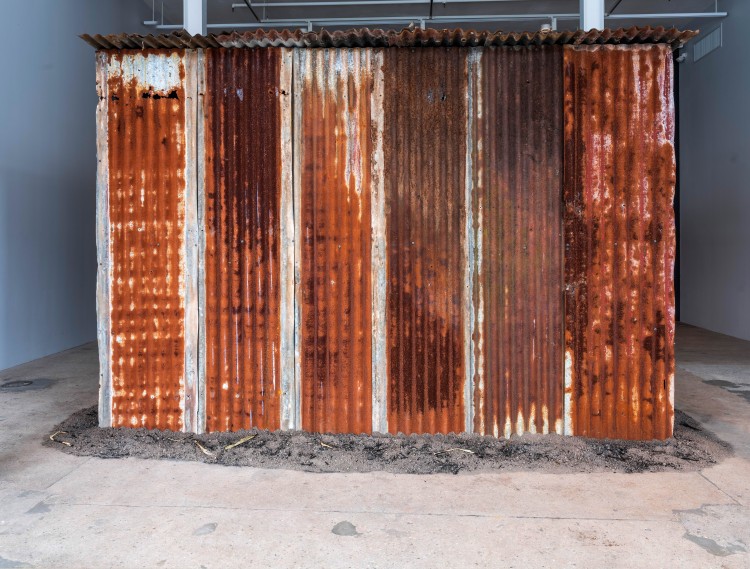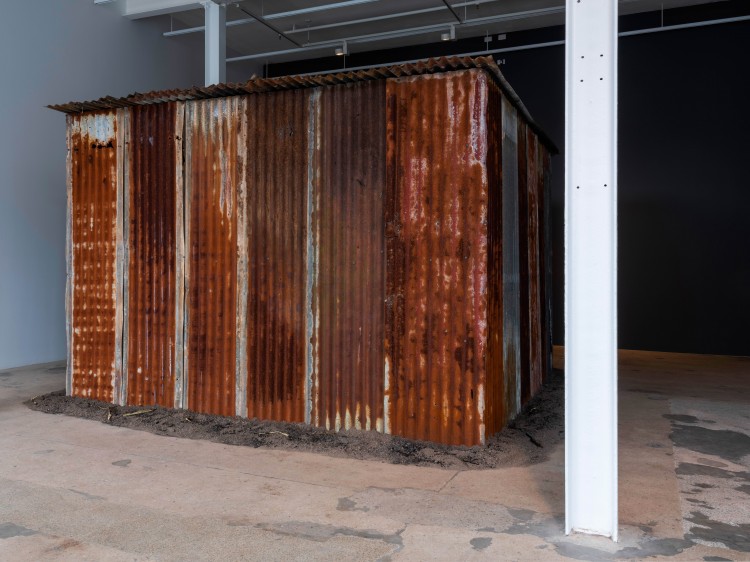Kotri, 2020, corrugated iron structure, wooden bench, soil, scent.
Plantation, 2020, single-channel projection, 14 mins.
Kūlī nām dharāyā, 2020, sound, 4.47 mins. Sound design: Isha Ram Das.
Kālāpānī, 2019-2020, multi-channel projection, Judith Wright Centre of Contemporary Arts façade.
Kūlī nām dharāyā/ they’ve given you the name ‘coolie’ recalls the lived experiences of indentured labourers taken from India to Natal (now KwaZulu-Natal, South Africa) to work on sugar plantations during the late 1800s and throughout the early 1900s. Continuing to trace her maternal background of indenture, Simpson creates a new archive, that speak to shared narratives of indentured labour.
The word ‘coolie’ is a significant theme of this exhibition. This term was often used negatively against indentured Indians and diaspora. By using language with links to this past, Simpson brings forward colonial narratives as way of acknowledging the intergenerational strength of her people. Their stories, legacies and realities are embodied in the installation—comprising a corrugated iron structure, video, sound, and smell.
The large-scale structure relates to direct experiences of indentured labourers on the plantations. This site of history is expressed in moving imagery of a sugar cane field, tinted with a red sky in a similar manner to the hand coloured colonial postcards that Simpson has uncovered in her research. Simpson’s mother sings the Bhojpuri folk song (with words loaned from South African Tamil) which echoes in the gallery and is louder inside the corrugated iron build. This song is from the early period of Indian indenture and describes how people where given the name ‘coolie’ rather than choosing it.
As part of this exhibition, a projection work on the Judith Wright Centre of Contemporary Arts façade has been developed in collaboration with Sai Karlen. The footage of a mirrored black sea speaks to the journeys of people, separated from their families and lands, as they travelled across different oceans and continents to work on the plantations. The sea’s continuous cycle provides a reminder of the stories and memories that are carried through generations and across time.
The cultural, historical and physical elements and experiences that Simpson brings together in this exhibition are informed by the archival material that is available to her, and the living memory and reality of herself and family. Her re-representation of history through another perspective creates a reflective space for ongoing resistance and healing.
Words by curator Freja Carmichael.


















